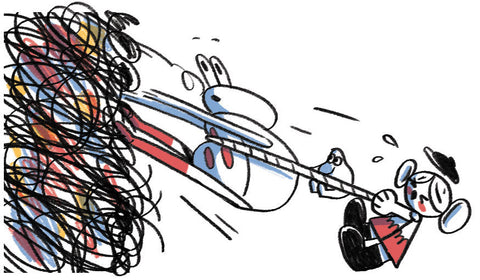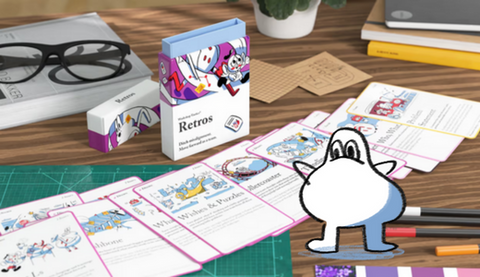Identifying where you stand out in a crowd is fundamental to your branding and brand strategy process. Let’s be honest, you’re not going to be the only company in your space, and sometimes it’s easier to put your head in the sand and act as if other brands don’t exist. However, if you learn to understand the benefits and strengths of these brands, it allows you to find space within your competitors and stand out in a crowd.
We call this “differentiation” – it’s what makes you different to everyone else.
How to run a brand differentiation workshop
By plotting a landscape of your competitors, you can pinpoint where your brand fits amongst them. It is a cousin of the Blue Ocean Framework.
Step 1: Write a list of your brand’s competitors.
This can be as many or few as you like, but we suggest around 10.
Step 2: Take a look at the list and try to group your competitors.
Ask questions such as; what are their strengths? What is the quality of their products or services? What is the cost of their products or services? Then, group the competitors together based on these answers.
Step 3: Create your competitor grid and label your x and y axis accordingly.

How do I choose what to label my axis?
This part will always be done on a case-by-case basis. It might help to do some research before doing this exercise, so you can figure out what’s important in your competitor's space and how to be as objective as possible.
You can label the x and y axis an infinite number of ways, but here are a few options to consider:
- Service quality
- Product quality
- Cost
- Are they purpose-led?
- Quality of design
- Number of features
- The clarity of their offering
Cost usually works well in this exercise as it’s an important factor to consider in any business.
Step 4: Start plotting your competitors on the map.
Choosing where the competitors go is a lot about your instincts and natural response to the brand, so you don’t need to overthink this step.
Step 5: Think about your brand and plot yourself on the map amongst your competitors.
Step 6: Review the map and see where you are in comparison to your competitors. Try and then identify the space in the market. It’s in this space where you’ll find room to differentiate yourself.
Often you’ll find that brands and businesses are trying to move into the space where you can charge more for a higher quality product. Low cost and low quality usually wouldn’t work if you're trying to sell a good product.
But remember: being great in some areas and not others, doesn’t quantify your success.
For example; Amazon sells low cost products that are usually low quality, but they are still one of the most successful businesses in the world.
It’s also important to note that this exercise is both qualitative and quantitative – so don’t take the findings too literally.









